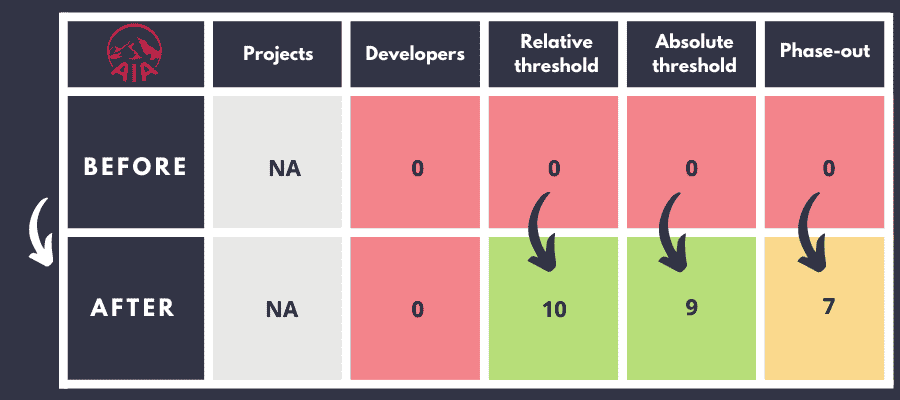AIA Group is a pan-Asian $326 billion-strong life insurance company based in Hong-Kong. In March 2021 it published its 2020 ESG report as well as a Coal Investment Statement, updating in the process its first coal exclusions implemented last year. Progress has been impressive. In just a few months, AIA went from lacking any coal policy to adopting a solid coal phase-out strategy.
The policy is not perfect, and some details are still missing at the time of publication, so some caution is still required. But if confirmed, such policy will set an ambitious precedent for other Asian financial players to follow.
1. What’s new
AIA has already divested from companies which derive at least 30% of their revenue from coal mining and/or coal power. While no change has been made regarding MAPFRE’s investments restrictions, several changes are outlined below regarding its insurance activities:
- AIA has already divested from companies which derive at least 30% of their revenue from coal mining and/or coal power;
- AIA will not invest in any new business if involved directly in either coal mining or coal power generation;
- For equities, it will divest completely from all coal mining and coal power companies by the end of 2021;
- For bonds it will completely divest from such companies by the end of 2028.
This commitment covers AIA’s directly managed investments as well as assets managed by external asset managers.
2. Our analysis: ambitious phase-out dates but some developers still missing
According to the latest financial data available published in November 2020, AIA had invested $191 million in coal companies. However, this data is partial and only covers assets directly managed by AIA and not its assets managed by external asset managers such as BlackRock, Wellington Management or Baillie Gifford. An estimate from IEEFA places AIA investments in additional coal infrastructure projects at a minimum of $3 billion and most likely $6 billion, which are not covered by the new coal policy.
AIA has been targeted in recent months by a grassroot campaign, AIA Kick Out Coal, that denounced its lack of any coal exclusion policy. The campaign has now been successful since AIA adopted a very ambitious coal-phase out strategy: it will divest the shares it holds in coal mining and coal power companies by the end of this year, while the bonds held in such companies are in run-off until 2028.
This means that its shareholdings in Tenaga Nasional Berhad ($138 million), the Malaysian national utility, will be divested in the coming months. It was the most controversial since this company operates 7GW of coal power and plans to build an additional 1.2GW. AIA was the 8th biggest shareholder of the company.
This new divestment policy coupled with the exclusion of any new investment in coal mining and coal power companies sets a strong precedent in Asia where financial institutions are still far behind their European counterparts. We call on other life insurers in the region such as the Life Insurance Company of India, Ping An, Samsung Life, Great Eastern, Thai Life or Fubon Life to follow this example.
However, the absence of an explicit exclusion of all coal developers casts a shadow over these improvements. With its current policy AIA can in fact still invest in 123 coal developers worldwide, either because they have no coal mining or coal power operations today, or because they are planning new coal infrastructures. On this point, the investor still lags behind Amundi or AXA IM.
Despite several requests to AIA, the share of assets owned by AIA not covered by the new coal policy is still unclear.
AIA’s Scores in the Coal Policy Tool
This table presents the coal scores of AIA based on five criteria of the Coal Policy Tool
3. Our conclusion
Reacting to external pressure, AIA has made an important first step to taking climate change seriously with the adoption of a solid coal phase-out strategy that other Asian investors should follow. The exclusion of any company active in coal mining or coal power is unprecedented for such an important global financial player. However, at this stage, the exclusion of all coal developers, very active in Asia, is still a key missing component and therefore an obstacle to considering the policy as a whole as robust.
Given the climate emergency we face, AIA must also tackle the oil & gas sector, starting with the exclusion of fossil developers.

